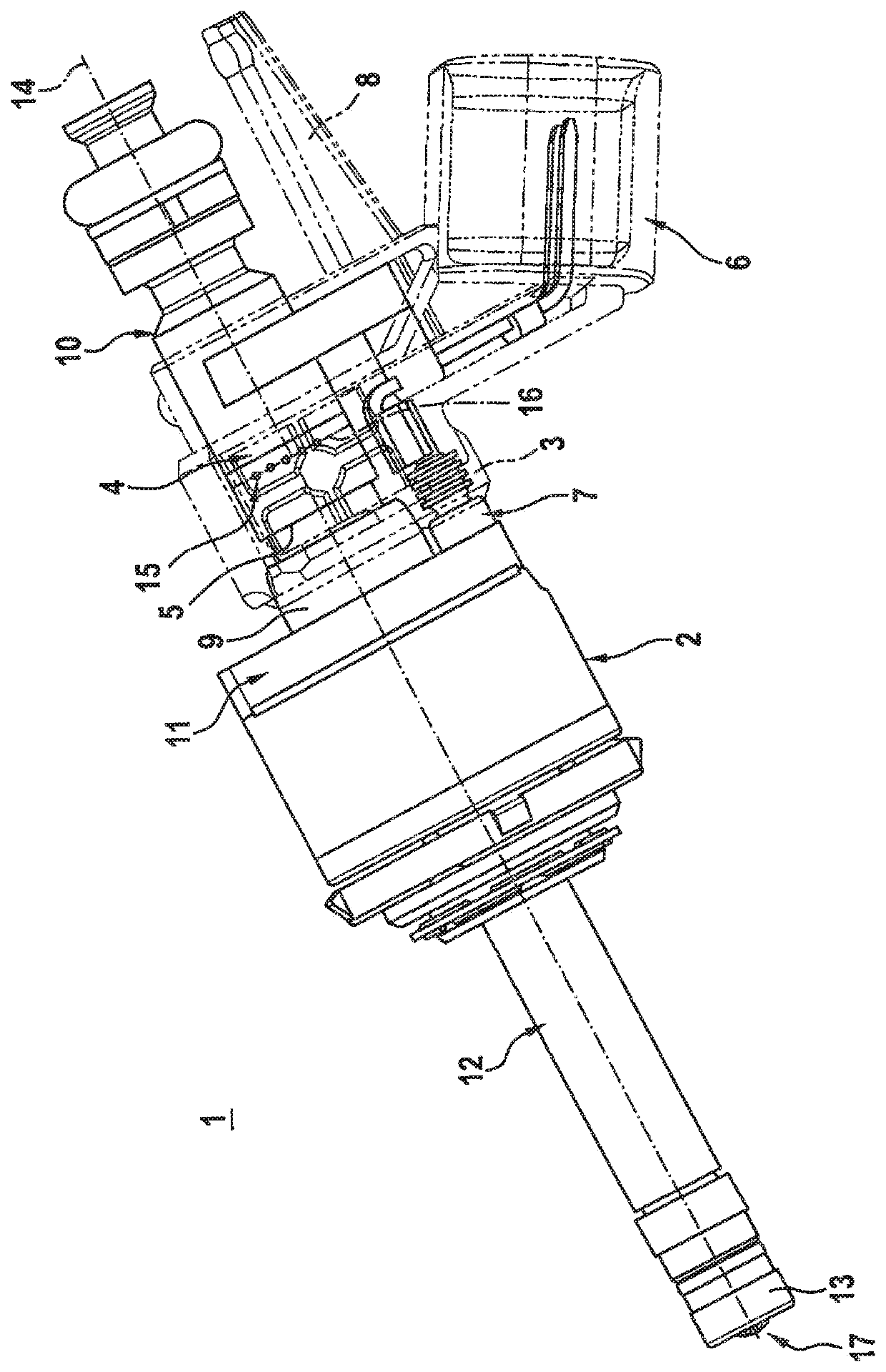Valve for metering a fluid
a valve and fluid technology, applied in the direction of valve housings, machines/engines, mechanical equipment, etc., can solve the problems of increasing production costs, micro-gaps between extrusion coatings and valve housings, and limited rotation of injection coatings relative to valve housings, so as to improve realization and function.
- Summary
- Abstract
- Description
- Claims
- Application Information
AI Technical Summary
Benefits of technology
Problems solved by technology
Method used
Image
Examples
Embodiment Construction
[0016]FIG. 1 shows a valve 1 for metering a fluid. Valve 1 is preferably used for metering a fuel, in particular gasoline or a fuel containing gasoline. Here, valve 1 can be fashioned as high-pressure injection valve 1, in particular as high-pressure fuel injection valve 1.
[0017]Valve 1 has a valve housing 2 and an extrusion coating 3. Extrusion coating 3 here surrounds an outer side 4 of a housing part 5 of valve housing 2. On extrusion coating 3 there is made a terminal 6 for a solenoid 7 and a rotational fixing 8. The rotational fixing 8 is fashioned as a part of extrusion coating 3 in this exemplary embodiment. In a modified embodiment, rotational fixing 8 can also be formed completely or partly from an additional element inserted into extrusion coating 3. In this way, the rotational fixing is joined to extrusion coating 3 on housing part 5.
[0018]In this exemplary embodiment, extrusion coating 3 also partly surrounds an inner pole 9 and a connecting sleeve 10 that form further h...
PUM
 Login to View More
Login to View More Abstract
Description
Claims
Application Information
 Login to View More
Login to View More - R&D
- Intellectual Property
- Life Sciences
- Materials
- Tech Scout
- Unparalleled Data Quality
- Higher Quality Content
- 60% Fewer Hallucinations
Browse by: Latest US Patents, China's latest patents, Technical Efficacy Thesaurus, Application Domain, Technology Topic, Popular Technical Reports.
© 2025 PatSnap. All rights reserved.Legal|Privacy policy|Modern Slavery Act Transparency Statement|Sitemap|About US| Contact US: help@patsnap.com

